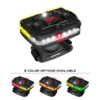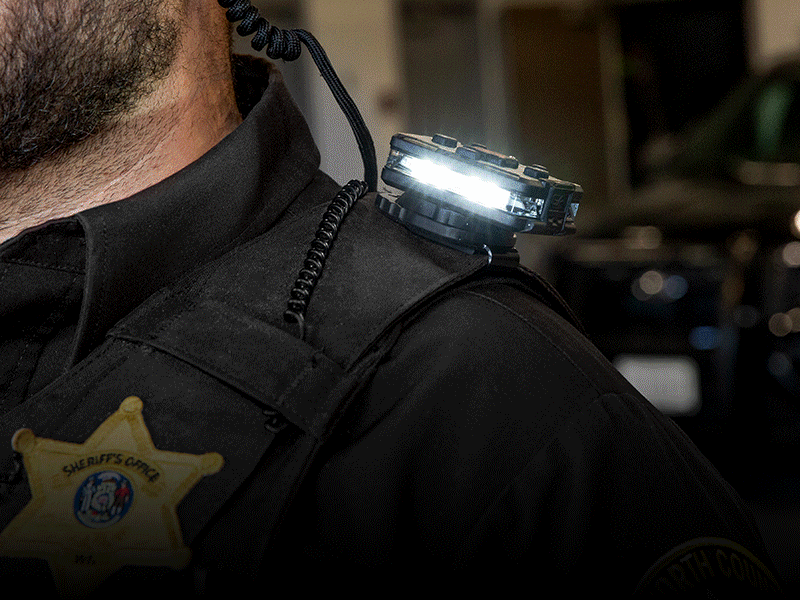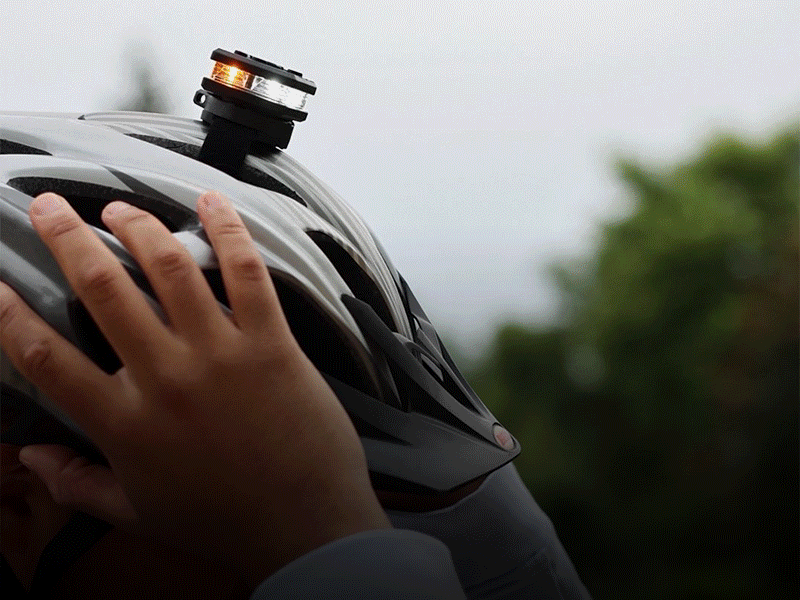Alaska Emergency Vehicle Light State Statutes
State Statutes Emergency Vehicle Lights
There are strict vehicle emergency lighting regulations in the state of Alaska. Such rules apply to public and private vehicles that respond to emergencies or may create traffic hazards due to speed, size or mission. There are limitations on the colors which are permitted to be used, depending on the vehicle’s position. There are also rules about how to put the lights on the cars, and under what conditions to use them.

Police Vehicle Lights
Throughout Alaska state, police vehicles are allowed to display red flashing lights on their doors, or revolving red and white lights. The lights should be installed as high on the vehicle as reasonably possible according to Alaska Admin Code 13 AAC 04.090, which can be seen from 500 feet in either direction in normal sunlight. A second light can also be mounted at the same height, in compliance with the same criteria for visibility.
With approval from the Chief of Police, the color of the extra police light may be blue. According to Alaska Admin Code 13 AAC 04.100, the vehicle must be clearly labeled as a police department vehicle and must have the municipality or agency listed in order to show a blue light. The light should only be illuminated when the vehicle is responding to an emergency, and the illumination in either direction in regular sunlight must be visible from 300 feet. Also the blue light must be used at the same time as the red light.
And according to code 13 AAC 04.100, if special permission is received from the chief of police, private vehicles belonging to representatives of police department may be fitted with a blue light. The driver must be qualified to provide lifesaving or medical services, and the sign of the star of life must appear on the car. In addition, the driver must have a valid Alaska driver’s license and within the previous 3 years the motor vehicle record must be free of suspension, revocation and cancelation. The same display and illumination rules apply also to private vehicles for the blue lights listed above for police vehicles.
Fire Department Lights
The rules for displaying lights and light bars on vehicles in the fire department are similar to police ones. The Alaska Admin Code 13 AAC 04.090, for emergency vehicles operated by a municipality or borough, permits flashing red lights or revolving red and white lights. To be seen from 500 feet in natural sunlight, the lights must be placed as high as is possible. A second light is also required for fire department vehicles, which have to be illuminated at the same height and with the same visibility criteria.
Fire trucks may also display a blue light with approval from the fire chief according to Alaska Admin Code 13 AAC 04.100. The vehicle shall be identified as a vehicle for the fire department and bear the name of the borough or municipality. The light has to be visible in either direction from 300 feet in normal sunlight, and can only be triggered when responding to an emergency. The blue light can be used only simultaneously with the red light.
Code 13 AAC 04.100 also allows for private vehicles belonging to members of the fire department to be equipped with a blue light if special permission is given by the fire chief. For the previous 3 years the driver must have a current Alaska driver’s license and clear driving record. The star of life icon must be clearly marked on the vehicle and the driver must be trained to perform lifesaving procedures for emergency use. The same regulations for blue lights show and lighting apply to private vehicles as to official vehicles in the department.
Volunteer Fire Vehicles
Per Alaska Admin Code 13 AAC 04.090, volunteer fire cars and trucks can be equipped with red lights as an approved emergency vehicle. We can have red and white signal lights spinning too. Both lights must be placed as high as possible on the vehicle and have visibility at an average sunlight from 500 feet into either direction.
Alaska Admin Code 13 AAC 04.100 specifies that the fire chief can require these private emergency and lifesaving vehicles, in addition to the red, to display a blue signal light. The vehicle’s driver must be licensed to provide lifesaving services and have a valid Alaska state license and a clean driving record for the preceding 3 years. Such lights can only be used in an emergency, and have to be placed high and visible in natural sunlight from 300 feet.
Ambulance Lights
An ambulance will display blinking red or revolving red and white lights as an approved emergency vehicle, using Alaska Admin Code 13 AAC 04.090. The lights must be visible in either direction from 500 feet, and placed as high as reasonably possible on top of the vehicle. The ambulance is also allowed to display an additional light, which is also placed as high as possible and needs the same visibility.
A blue light is required according to Alaska Admin Code 13 AAC 04.100 for ambulances. It must be clearly labeled as a departmental emergency medical vehicle and must have the municipality or borough specified. The blue light must be apparent in any direction, from 300 feet. Only when the vehicle responds to an emergency can the light be triggered, and must be used concurrently with red light.
Tow Truck Lights
A tow truck is needed according to Alaska Admin Code 13 AAC 04.095 to display a flashing yellow warning light that is visible in any direction in normal sunlight at 500 feet. In planning, the yellow warning light must be triggered at the position from which a disabled vehicle is to be towed, as well as when the tow truck moves a vehicle for the traffic flow at a slower than normal speed. If the towed disabled vehicle does not have rear taillights illuminated, and it is dark outside, the yellow warning light must be activated. If the towed car blocks the taillights, stop lights or turn signals on the tow truck, then the tow truck should have the yellow light blinking as well. These are the only situations where the yellow light on the tow-vehicle can be illuminated.
Construction Vehicle Lights
Alaska Admin Code 13 AAC 04.095 allows vehicles used for road construction to be fitted with yellow blinking hazard lights as required. Both lights have to be mounted at the same level and should be spaced laterally as far apart as possible. If the total width of the construction vehicle is less than 80 inches, only one warning light shall be shown at the vehicle’s rear. Under natural sunlight the lights must be visible in any direction up to 500 feet.
The lights will display simultaneously blinking yellow construction vehicle lights to the front of the car. The lights showing warning at the vehicle’s rear will show blinking red or yellow at the same time. The lights should be triggered while operating on or within eight feet of the roadway in situations like highway maintenance, inspection, survey, or construction. Many drivers are alerted by the hazard lights of the possible traffic hazard created by the slow moving or stationary construction vehicle so they can proceed carefully.
Utility Vehicle Lights
As with construction vehicles, blinking yellow hazard lights per code 13 AAC 04.095 must be activated by utility vehicles. The lights should be seen in every direction up to 500 feet, and mounted on the same level as each other.
Lights at the vehicle’s front must be yellow, and lights at the rear should be yellow or red. The lights should be illuminated to warn drivers of possible traffic hazards when actively conducting the building, demolition, repair, maintenance or inspection of a public utilities site. The warning lights should also be used when parking a utility vehicle within eight feet of a highway or moving slower than the typical traffic speed.
Pilot Vehicle Lights
Pilot vehicles must display yellow flashing hazard lights while escorting an oversize load, according to Alaska Admin Code 13 AAC 04.095. As with construction vehicles and utility vehicles, the lights must be visible up to 500 feet. To order to alert other drivers of possible traffic hazards from the huge and slower moving vehicle, warning lights should only be used when deliberately ushering the overweight freight.
Security Vehicle Lights
Under the Alaska State Statutes, police vehicles have no authorizations to use colored emergency lights. Admin code 13 AAC 60.110 (http:/www.akleg.gov/basis/aac.asp#13.60.100) specifies that the term “safety” and the name of the organization should be clearly marked with safety vehicles.
Alaska does not need approvals for any of its colored lights. The guidelines on how to do so can be found on the Alaska Department of Public Safety Fire and Life Safety website for emergency vehicles requiring special permission to use blue lights under code 13 AAC 04.095.





